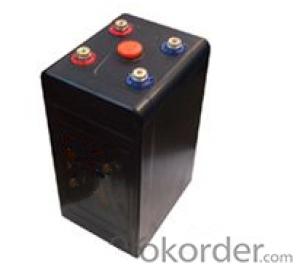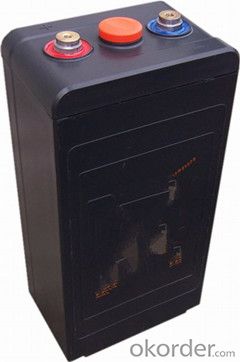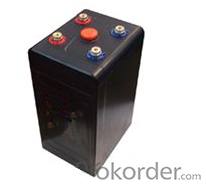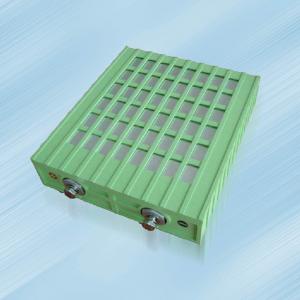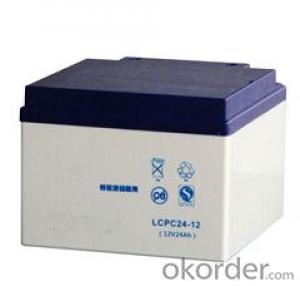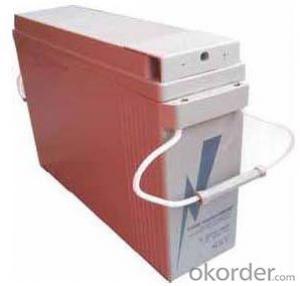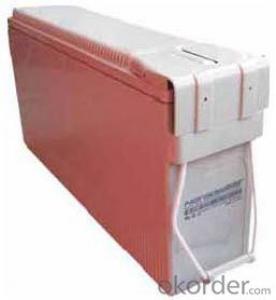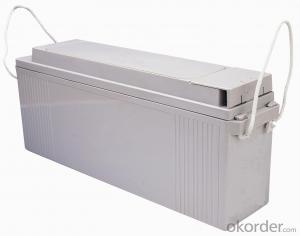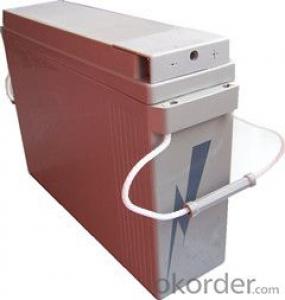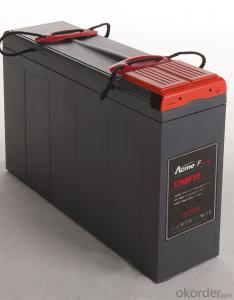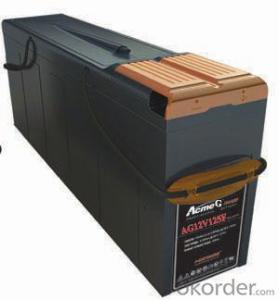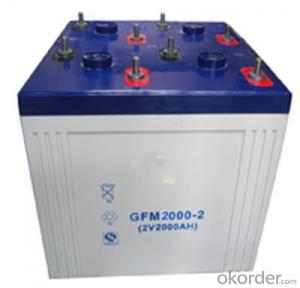battery the EosG series batteries EosG400
- Loading Port:
- Shanghai
- Payment Terms:
- TT OR LC
- Min Order Qty:
- 2000 unit
- Supply Capability:
- 5000000 unit/month
OKorder Service Pledge
OKorder Financial Service
You Might Also Like
Range summary
The EosG range of gel technology batteries offers outstanding performance including a 15+ years design life .
The EosG series batteries is designed based on the Eos series.
Using the polymer gel electrolyte .
Built to the highest standards and compliant with the latest IEC60896-21/22 standard .
This range also offers 100% capacity out-of-the-box and is capable of handling deep discharges for complete peace of mind. The use of flexible connectors and the ability to be installed both horizontally and vertically allows for multiple installation possibilities.
Technical features
Above 15 years designed life
Reliable post sealing structure
Excellent charging acceptant ability
Excellent performance at extreme high and low temperature
Low self-discharge ability
Flexible and convenient installation with slinky outside looking
Type: | EosG400 | |
Voltage: | 2V | |
Nominal Capacity: | 400Ah(C10) | 400Ah(10 hours rate:) |
Length: | 166mm | |
Width: | 184.5mm | |
Height: | 360.5mm | |
Height with termial: | 372mm | |
Weight: | 25Kg |
Compliant standards
IEC60896-21/22
BS6290 part 4
Telcordia SR4228
Eurobat guide
UL
Manufactured under system ISO9001(TUV)
EN 50272-2 or local equivalents
Correspondence exchange and transmission system
Mobile communication system
Power plant and power transformer system
Navigation and signaling system
Solar energy system
Radio and broadcasting station
Emergency lighting system
Plate special patent calcium and tin lead alloy and thick plate design
Container ABS(V0 optional)
Separator AGM
Valve EPDR
Electrolyte using the polymer gel electrolyte
Terminal M8 copper core posts
Battery installation compliant with:
Main applications
Products characteristics:
FAQ
![]() What is sulfation of batteries?
What is sulfation of batteries?
Sulfation is the formation or deposit of lead sulfate on the surface and in the pores of the active material of the batteries' lead plates. If the sulfation becomes excessive and forms large crystals on the plates, the battery will not operate efficiently and may not work at all. Common causes of battery sulfation are standing a long time in a discharged condition, operating at excessive temperatures, and prolonged under or over charging.
![]() How long a battery can last?
How long a battery can last?
The service design life of a battery are vary considerably with how it is used, how it is maintained and charged, temperature, and other factors.
![]() Do batteries self-discharge when not in use?
Do batteries self-discharge when not in use?
All batteries, regardless of their chemistry, self-discharge. The rate of self-discharge depends both on the type of battery and the storage temperature the batteries are exposed to. However, for a good estimate, Narada batteries self-discharge approximately 4% per week at 80ĄăF.
- Q: How to determine the battery is good or bad?
- Observe the battery electrolyte is turbid, turbidity that the battery positive plate softening. Observe the bottom of the battery whether there is sediment, if the plate off the battery capacity has been inadequate. Hand hit the battery two electrode piles If you hear an empty voice that pole pile and plate break. With a thick wire short-circuit positive and negative pile observation of the battery filling holes, such as the discovery of a bubble appears that the interval has been damaged.
- Q: Maintenance-free battery how to detect it?
- Battery pole Pole terminal has corrosive material without treatment, as long as no loose on it. If the appearance of the corrosive material, the inner surface of the terminal will also be corrosion, resulting in increased resistance, affecting the normal battery charging and discharge, it must be promptly processed.
- Q: What battery does the van use?
- General use of lead-acid batteries. Electrode is mainly made of lead and its oxide, the electrolyte is a sulfuric acid solution of a battery. English: Lead-acid battery Discharge state, the main component of the cathode is lead dioxide, the main component of the negative lead; charge state, the main components of the positive and negative are lead sulfate. Divided into exhausted batteries and maintenance-free lead-acid batteries.
- Q: How should the battery be well maintained?
- Electrolyte density This is to evaluate whether the battery charge is normal, whether the aging of the important parameters, the use of density meter or electrolyte density tester can be measured. If the electrolyte density is too small, you need to charge. And the electrolyte concentration is too thick or too thin to a certain extent, it means that such as the occurrence of plate vulcanization, short circuit or overcharge phenomenon, this time on the need for maintenance.
- Q: 80ah how much battery storage capacity?
- The size of the battery storage power refers to the battery capacity. Battery capacity is generally calculated in AH (safety). You 80Ah battery capacity is 80Ah, meaning that if you discharge current to 80A, you can put an hour.
- Q: The role of the battery?
- Battery is a kind of battery, its role is to be able to save the limited power, in the right place to make 6v4ah emergency light battery. Its working principle is to convert chemical energy into electricity.
- Q: What kind of battery is divided into?
- Ordinary battery: ordinary battery plate is composed of lead and lead oxide, the electrolyte is sulfuric acid aqueous solution. Its main advantage is the voltage stability, the price is cheap.
- Q: How does the battery increase the voltage?
- With the same battery pack in series; if the required current is relatively small, you can use DC-DC module.
- Q: What is a maintenanceable battery?
- Maintenance-free battery due to its own structure on the advantages of electrolyte consumption is very small, in the life of the basic need not add distilled water.
- Q: How does battery activation work?
- If the battery is charged, because the battery discharge itself, the active substance to activate, not add acid, but should be added pure water (no minerals and impurities in the water) is best steaming water, and now you Since the addition, you can use water to wash several times, and then use 1C current charge to 2.3 times. Then discharge, so repeated several times, will be better. So that you can remove the vulcanization.
Send your message to us
battery the EosG series batteries EosG400
- Loading Port:
- Shanghai
- Payment Terms:
- TT OR LC
- Min Order Qty:
- 2000 unit
- Supply Capability:
- 5000000 unit/month
OKorder Service Pledge
OKorder Financial Service
Similar products
Hot products
Hot Searches
Related keywords

